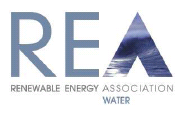Isle of Wight hosts Wave and Tidal Technologies Symposium

The marine renewable energy resource, comprising of wave and tidal power, is a massive untapped resource in which the UK is abundant. Europe holds 20% - 30% of global tidal resources, 80% of which is located in and around the coastlines of the UK and France. Marine renewables could therefore make a significant contribution to helping the UK achieving its share of the EU 20% target. However this industry is still extremely young and only a handful of devices are deployed worldwide. The sum of both tidal stream and wave energy totals less than 5MW, globally.
The Renewable Energy Asociation’s (REA) annual Wave and Tidal Technologies Symposium (WATTS), now in its 5th year, addresses the most pertinent issues affecting the sector. WATTS 2007, held on the Isle of Wight, was very well received, the sun shone and the Island provided a beautiful backdrop for the conference. Many attended to hear more about technical aspects within the industry and to see how real projects had fared in the water. The case studies session provided valuable perspectives and experience of functional and technical practicalities. Cyrille Perier of EDF gave a fascinating presentation on operational experience with the La Rance tidal barrage, one of the few devices in full operation, and showed some very impressive videos which included the construction process. Hans Christian Sørensen, Chairman of the Wave Dragon Board, offered his experience of the Wales based Wave dragon demonstration project, and Peter Fraenkel of Marine Current Turbines gave a progress report on the ‘Seagen’ tidal turbine.
Other presentations offered a taste of the industry across the British Isles with contributions from Sue Kearns of the Scottish Executive, Ron Loveland from the Welsh Assembly discussing initiatives in Wales, and Eoin Sweeny of the Irish Marine Institute. There is no denying the continued frustration that despite much rhetoric from government, the UK administration has still done little to set up policy mechanisms that will establish a positive investment framework for marine energy, and regulatory and permitting issues threaten to be real barriers. The Severn tidal barrage also had much airing and remains a contentious issue. Looking outside the UK, Anna Gigantino, Head of Ocean Energy at the European Commission, outlined opportunities within the EU for marine renewables.
Marine renewables companies were among the 40 founder members of the REA, established in 2001 to represent British renewable energy producers and promote the use of sustainable energy in the UK. The REA has now expanded to over 500 companies, active across the whole spectrum of renewables. The Ocean Energy Group provides a forum for REA members with interests in the marine renewables sector. Stephanie Merry, the REA’s Head of Marine, offers her extensive expertise and knowledge in helping the group achieve its aims. A primary focus of the OEG is the progress of marine energy device development to prove the capability and survivability of full-scale prototypes, and facilitate the measures required to bring projects to commercial fruition. The group offers a medium for information dissemination, networking and government lobbying. The OEG engages in policy development and provide input to Government departments, agencies, NGOs and others. The OEG strives to ensure that development of the marine renewables industry is not hindered through disproportionate financial, technical or bureaucratic barriers upon developers, while working to ensure that all parties involved are fairly represented.
For more information, and to view the presentations from the conference visit www.r-ea.net
 Send this story to a colleague
Send this story to a colleague


